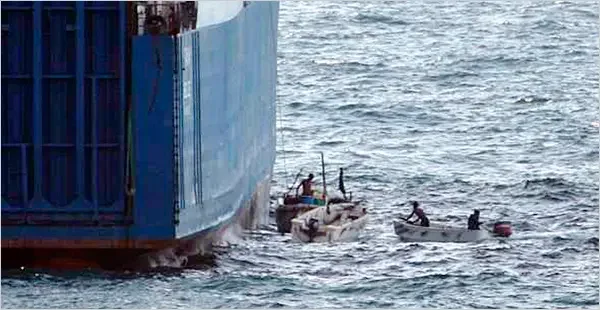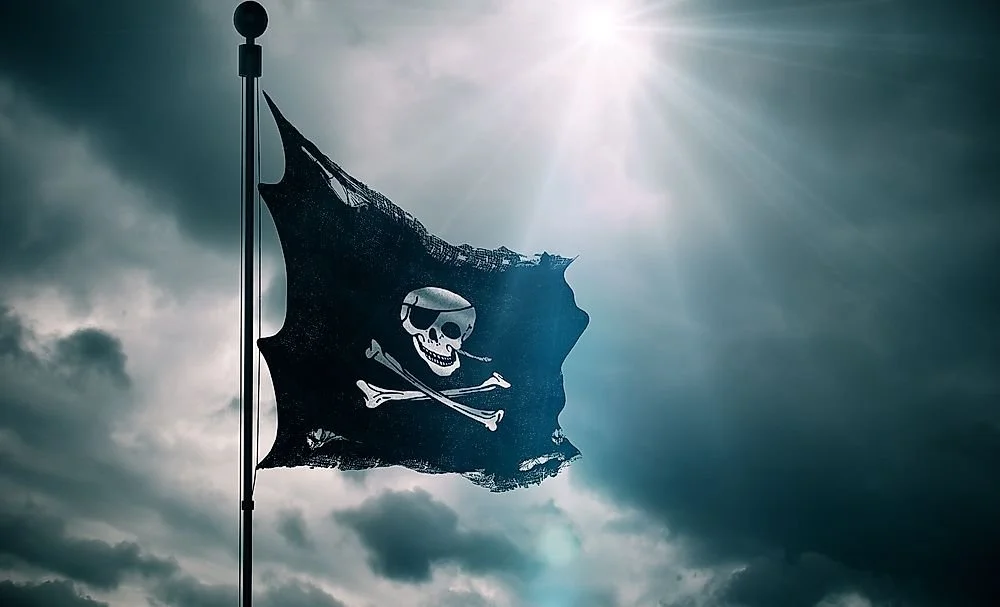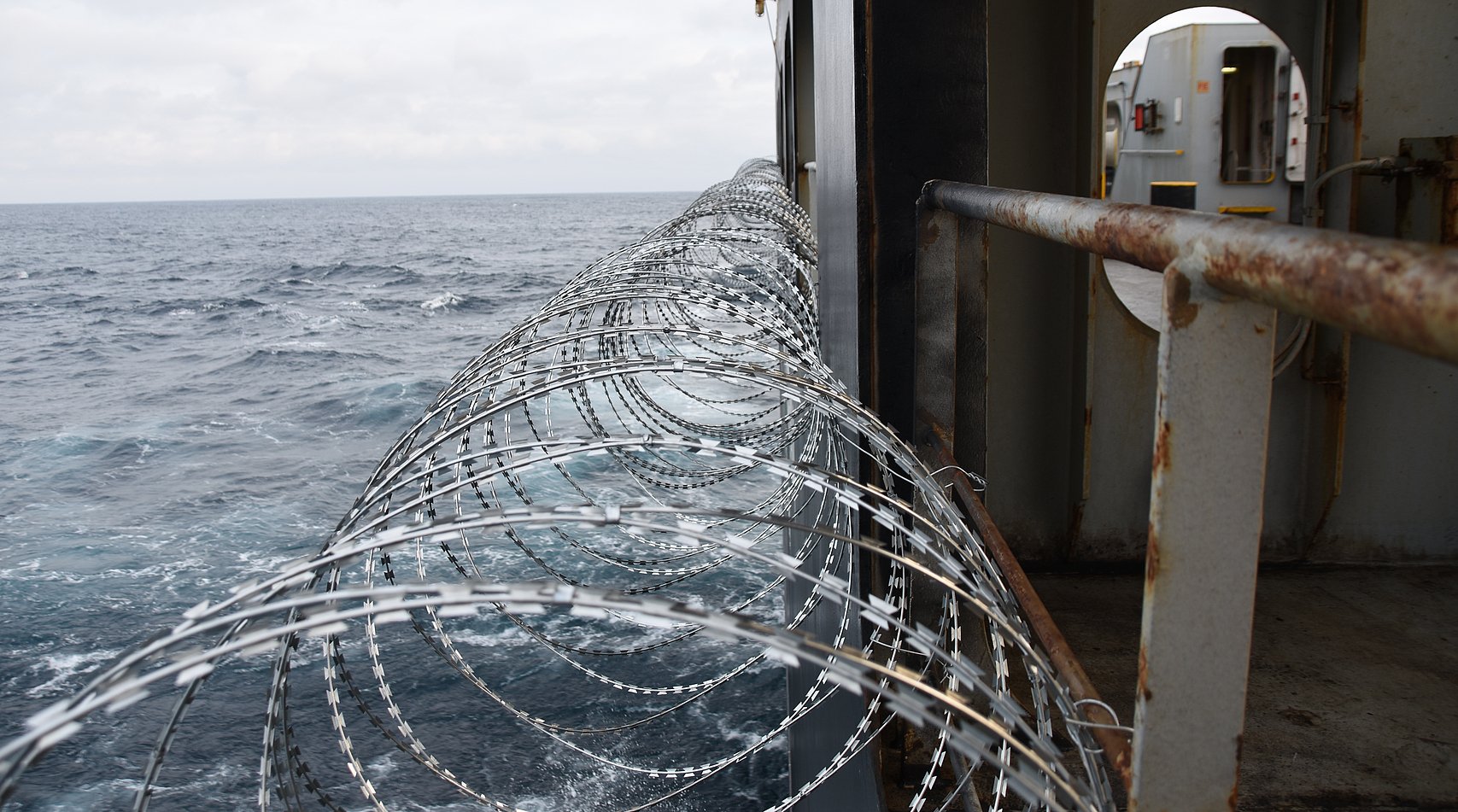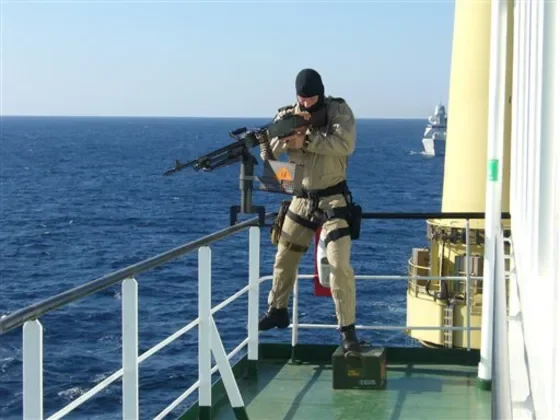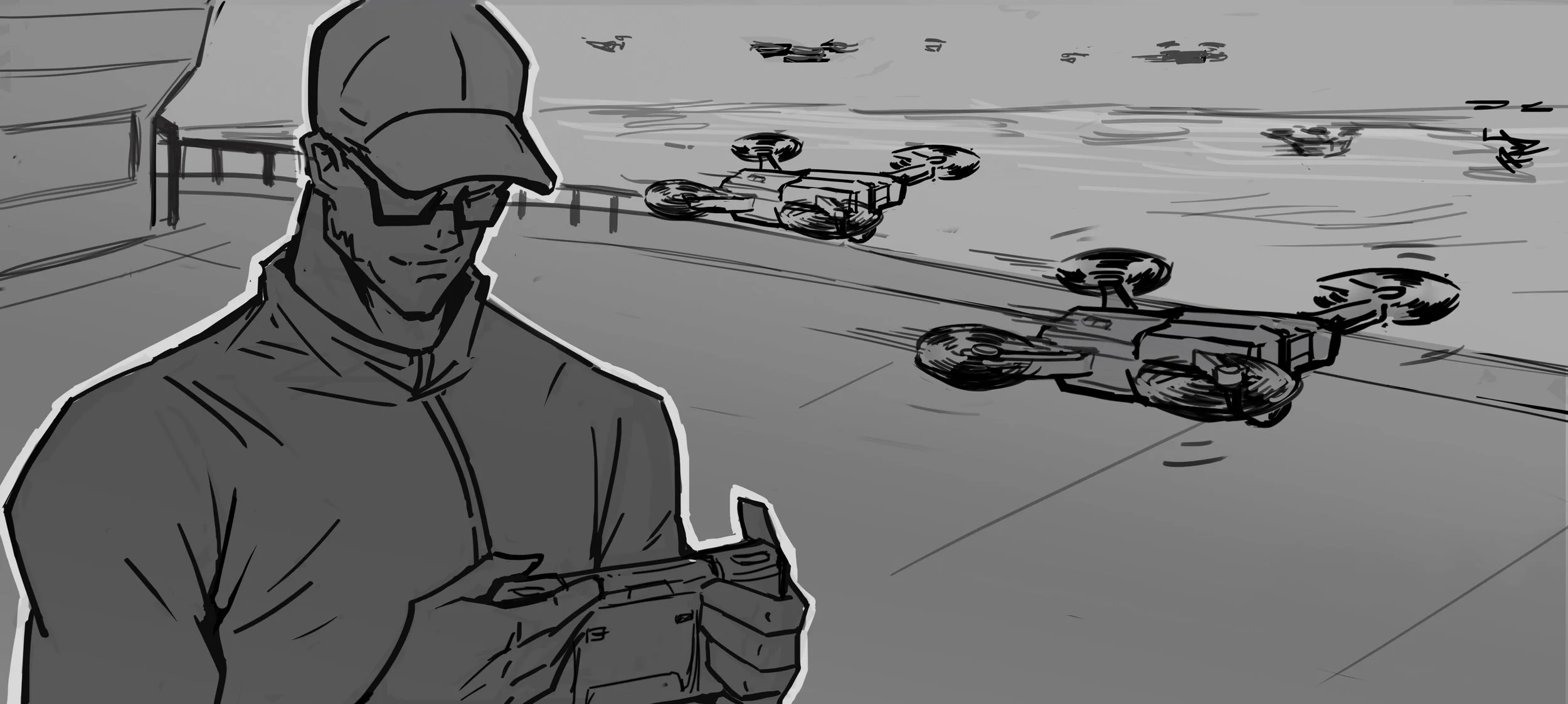PIRATE-FIGHTING DRONE SWARMS
BACKGROUND
A future thinking workshop was conducted with six participants to address a real socio-economic issue while providing opportunities to develop critical and creative thinking skills. The workshop also provided participants with the opportunity to learn design fiction in the development of near-future scenarios.
As the workshop was only one day, desk and field research were conducted prior to the workshop to provide participants with reference material as stimulus for the exercise. The following brief was provided to participants prior to the workshop:
To better understand how address ongoing pirate attacks on cargo ships along the African coast through a design fiction workshop. Participants will conceptualize, write, and produce a short narrative (less than 1,500 words) for a possible solution.
A short, graphic narrative was the chosen archetype. It was decided that this type of narrative would be fun for participants to create, as well as an excellent communication device for a variety of stakeholders. The goal was for the narrative to drive ongoing discussions, questions, and further speculation.
PRE-WORKSHOP
Workshop participants were provided the following background and context to prepare for the exercise.
Piracy targeting cargo ships is experiencing a significant uptick through mid-2025. The Singapore Strait and Gulf of Guinea are current trouble spots, seeing high numbers of armed robberies and crew kidnappings. Southeast Asia overall has seen a sharp surge in incidents. While Somali waters have quieted recently, resurgence potential remains.
Simultaneously, the Red Sea faces a distinct but growing threat from Houthi militant attacks, not classic piracy but severely disrupting trade and prompting security concerns.
Countermeasures span global and regional navies, multilateral task forces, and industry-driven prevention. Collaboration, technology, and rapid response remain crucial in an evolving maritime threat environment.
Global Piracy Trends
Rising global incidents: The International Maritime Bureau (IMB) recorded 90 cases of piracy and armed robbery in the first half of 2025—a 50% increase from the same period in 2024. This marks the highest midyear total since 2020
Incidents included 79 boarded vessels, 6 attempted attacks, 4 hijackings, and 1 vessel fired upon. Notably, 40 crew members were taken hostage, 16 kidnapped, and others threatened or injured
Regional hotspots
Singapore Strait: Accounted for 57 of those incidents—about 63% globally—commonly involving small-scale armed robbery using guns or knives
Gulf of Guinea: Though fewer incidents, this region remains the focal area for crew kidnappings, comprising 87% of such cases globally in early 2025
Southeast Asia overall: Q1 2025 saw a 53% rise in piracy and ship robbery in Asian waters, with 43 incidents reported versus 28 in Q1 2024. The Malacca and Singapore straits remain the most affected areas
Somalia and Gulf of Aden: While no new incidents have been reported since April 2025, concerns persist over resurgence, especially with seasonal shifts.
High‑Risk Zones by Region
Singapore Strait and Southeast Asia: High-density maritime traffic fuels opportunistic armed robberies—typically nonviolent thefts of onboard supplies or spares
Gulf of Guinea: Kidnap-for-ransom remains a dangerous trend. Pirates exploit geographical advantages within the Niger Delta for hijack operations that often extend for weeks
Horn of Africa / Somalia: There’s a potential resurgence in piracy; notably, the December 2023 hijacking of MV Ruen marked the first successful tanker hijack since 2017. International navies and Indian forces played critical roles in the rescue
Geopolitically Driven Threat: Red Sea & Houthis
Cargo vessels are increasingly vulnerable to militant attacks, particularly in the Red Sea—not traditional piracy, but state-backed aggression:
In July 2025, weeks in the Red Sea saw deadly assaults by Yemen’s Houthi rebels on the cargo ships Magic Seas and Eternity C. The attacks involved small boats and drones, resulting in fatalities, sinkings, and missing crew
The incidents marked a sharp revival of such attacks that had largely subsided since December 2024. Insurers, maritime authorities, and vessel owners now treat Red Sea routes as high-risk, with increased premiums and rerouting becoming common
These attacks threaten trade safe passage and freedom of navigation, highlighting the broader strategic threats posed by non‑state and proxy actors
Countermeasures & Strategic Responses
International naval coordination:
CTF‑151, under Combined Maritime Forces, continues to patrol piracy-prone zones near Somalia, Yemen, Gulf of Aden, and the Arabian Sea. As of January 2025, it is led by Pakistan’s Commodore Sohail Ahmed Azmie
Operation Prosperity Guardian, launched in response to the 2023 hijacking of Galaxy Leader, has multinational naval support aimed at safeguarding Red Sea shipping corridors
Operation Sankalp: The Indian Navy’s MARCOS successfully conducted a high-speed rescue after MV Ruen was hijacked, exemplifying active military intervention
Regional cooperation: In Asia, the ReCAAP ISC fosters shared intelligence and coordination among 21 participating countries to deter piracy in critical straits like Malacca and Singapore
Industry-led vigilance: Shipping operators are investing in crew training, enhanced surveillance tech, and adherence to best management practices. Early-warning systems like the Ship Security Reporting System (SSRS) allow immediate responses by naval assets when alerts are raised. Satellite tracking and information sharing also play key roles.
ANTI-PIRATE METHODS AND SOLUTIONS
Cargo ships today use a combination of physical security, onboard protocols, technology, and international support to prevent and counter pirate attacks. Here are the main methods and solutions in use as of 2025:
1. Physical Security Measures
Hardening the Ship
Razor wire around the ship’s perimeter to prevent boarding.
Water cannons or fire hoses used to repel approaching skiffs.
Electric fencing and barriers around vulnerable access points.
Steel doors and lock-down zones to protect crew (e.g., bridge and engine room).
Citadels (Safe Rooms)
Fortified, secure rooms where the crew can retreat during an attack.
Equipped with communication tools, food, water, and life support.
Allows the ship to be controlled remotely while awaiting rescue.
2. Navigation and Route Planning
Avoiding high-risk areas like the Gulf of Guinea or Red Sea during peak threat periods.
Transit timing: Sailing through dangerous waters during daylight hours when visibility is better.
Speed adjustments: Moving at higher speeds in pirate-prone zones to make boarding difficult.
3. Technology and Surveillance
Radar and Early Detection
Use of long-range radar, AIS (Automatic Identification System), and thermal imaging to detect approaching small boats early.
Anti-Drone Systems
Particularly useful in areas like the Red Sea, where drones have been used in attacks by militants like the Houthis.
SSRS (Ship Security Reporting System)
A satellite-based emergency alert system that instantly notifies international naval forces of piracy incidents.
4. Onboard Security Teams
Deployment of Private Maritime Security Contractors (PMSCs) or armed naval guards. These teams are trained to deter and defend against pirate boarding attempts. Their presence alone often discourages attacks.
5. Best Management Practices (BMP)
A widely followed set of voluntary guidelines created by the shipping industry and navies. BMP5 (the current version) advises on:
Watchkeeping
Evasive maneuvers
Emergency drills
Use of physical barriers
Communication with naval forces
6. Cooperation with Naval Forces
Cargo ships register their transit with naval coordination centers, like:
UKMTO (UK Maritime Trade Operations)
MSCHOA (Maritime Security Centre – Horn of Africa)
Allows real-time support from operations like:
Combined Task Force 151 (Gulf of Aden)
Operation Atalanta (EU)
Operation Sankalp (Indian Navy)
7. Information Sharing and Intelligence
These platforms provide alerts on recent pirate activity and recommended avoidance strategies. Participation in regional networks like:
ReCAAP ISC (Southeast Asia)
Gulf of Guinea Maritime Collaboration Forum
8. Emerging Solutions (2025 and Beyond)
AI-powered surveillance systems to detect patterns of suspicious vessel movements.
Autonomous drones for perimeter monitoring.
Geo-fencing alerts when unauthorized vessels breach set boundaries.
Non-lethal weapons (e.g., long-range acoustic devices, laser dazzlers) for early deterrence.
DURING THE WORKSHOP
An introduction to the agenda and design fiction was followed by a review of the background materials. Examples of short, visual narratives were shared as well as other examples posted on the room walls. It was explained that AR was not a futuristic technology and was being incorporated into more business and operational settings. This was to ensure participants understood that this exercise was not science fiction, but a plausible near-future scenario.
Several analysis and ideation tools were demonstrated as drivers for ideation. For example, SWOT analysis, Six Thinking Hats, SCAMPER, “What if” statements, and mind maps. In addition, all participants received IDEA BOOSTERS and IDEA KILLERS cards to assist during ideation.
Dr. Dave challenged participants throughout the workshop with questions and ongoing probes to help expand and narrow ideas. For example:
How can shipping firms develop proactive systems to deter pirate attacks?
Which international laws can cargo ship crews leverage to deter pirate attacks?
Two groups of three participants were organized. The groups were instructed to discuss the background materials and overall assignment, ideate on possible solutions to address the ongoing challenges of pirate attacks, and narrow the list of ideas to the top choices.
Groups shared ideas and a dot-voting session was used to narrow the list. The participants agreed on the adoption of drones to allow cargo ship crews the ability to deter and if necessary, defend against pirate attacks. The chosen topic was:
A fictional account of a cargo ship being attacked by multiple pirate vessels and utilizing drone defense systems to deter pirates and avoid boarding.
Each group developed key story points using a seven-step story outline. In addition, the groups improved their ideas using the Six Thinking Hats analysis tool. Each idea was written on a single sticky note. All notes were placed on a master storyline map and the ideas were grouped and organized. In addition, several participants created rough illustrations to help visually communicate the ideas. Finally, each participant reviewed the storyline map and edits were finalized, along with new ideas or comments. The workshop addressed the following question:
What if drones were used to deter pirate attacks and allow cargo ships to operate safely without outside support?
POST WORKSHOP
Approximately one week after the workshop, the following narrative was shared with participants. Based on the group’s ideas and mock story outlines, illustrations were developed along with the following short narrative. These elements were combined to create the following graphic narrative.
A follow-up online video discussion was held to drive further discussion, share additional comments and questions, as well as new ideas. Overall feedback from the participants was positive as all asked to be included in the next public workshop.
SAFETY ON THE SEAS
Captain Murray was tired of having armed, private security teams on his ships. Their effectiveness against pirate attacks was successful; however, the security teams did not completely deter pirate attacks. In addition, conflicts between crew and security teams were an ongoing issue as well as security teams understanding Captain Murray oversaw everything on the ship, including them.
Arming the ship’s crew was also used but not preferred. Crews were not soldiers and needed ongoing weapons training, especially in terms of safety and international laws. In addition, the use of deterrents such as barbed wire proved to only slow the pirates from eventual boarding. Captain Murray and other captains within the cargo ship industry were looking for better solutions.
Based on new drone technologies and applications, the shipping industry began interacting with drone developers for solutions, specifically for cargo ship usage. The drones would need to operate in a variety of challenging conditions; salt water, high winds, low visibility. In addition, the solution needed to be easy-to-learn and easy-to-operate, so crews could operate the systems independently. The system also needed to have levels of safety for users and storage and operation on ships. However, the systems required deadly abilities when necessary.
A leading drone developer was hired to develop the system. Testing was conducted over a 6 month period with a suitable system developed. The systems were installed on ships operating in areas of high piracy activity. Development teams along with ship crews worked together to beta-test and refine the overall capabilities.
After several months of testing and refinement, the first “production” systems were provided to several cargo ship carriers. Within the first 60 days of operation, the system was put into use during a multi-boat pirate attack on a Greek cargo ship operating off the Singapore Straights. The ship’s crew had been extensively trained in the operation of the system, along with various defensive and offensive tactics. In addition, the system allowed for real-time monitoring and operation from system developers, when necessary.
During the attack, the ship’s crew performed flawlessly and no remote intervention was required by the system developers. Reconnaissance drones warned the pirates via audio to turn away or face attack. The audio was broadcast in several languages to avoid any mis-communication. As the pirates did not retreat, a second group of drones dropped pepper spray balls into each boat as another warning. Unfortunately, the pirate boats continued to approach the ship resulting into a third group of drones dropping explosives into the closest pirate boat. The explosives blew holes into the boat’s hull causing it to immediately slow resulting in the pirates jumping overboard. As the second pirate boat realized what was happening, the boat turned back to rescue the pirates now in the water. Throughout this, a fourth group of drones continued to drop pepper spray balls into the boat, along with emitting electronic shock waves causing the engines to fail.
This first use was a success, and resulted in the pirates stranded at sea with an inoperable boat. Shortly after, the Malaysian navy arrived and took the pirates into custody, along with fully sinking the two boats. Shortly after this attack, another Greek ship in the Gulf of Guinea was attacked. The boat unleashed the same drone system during a multi-boat pirate attack. Similarly to the initial usage, this defense was another successful usage. This time the drones were required to drop multiple explosive devices resulting in multiple pirate deaths. As word spread about the new drone attack systems, pirate attacks greatly reduced as pirates planned on new ways to prey on passing ships.
